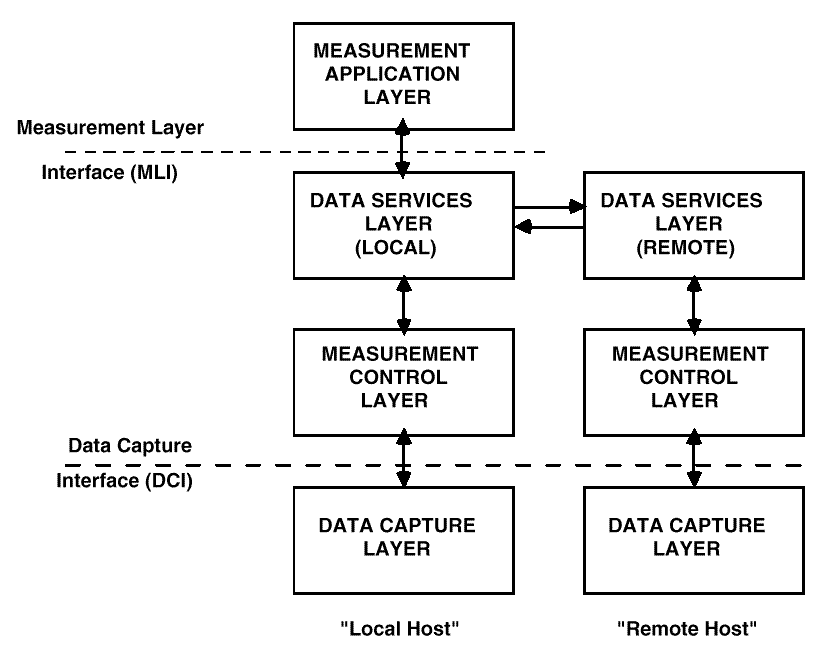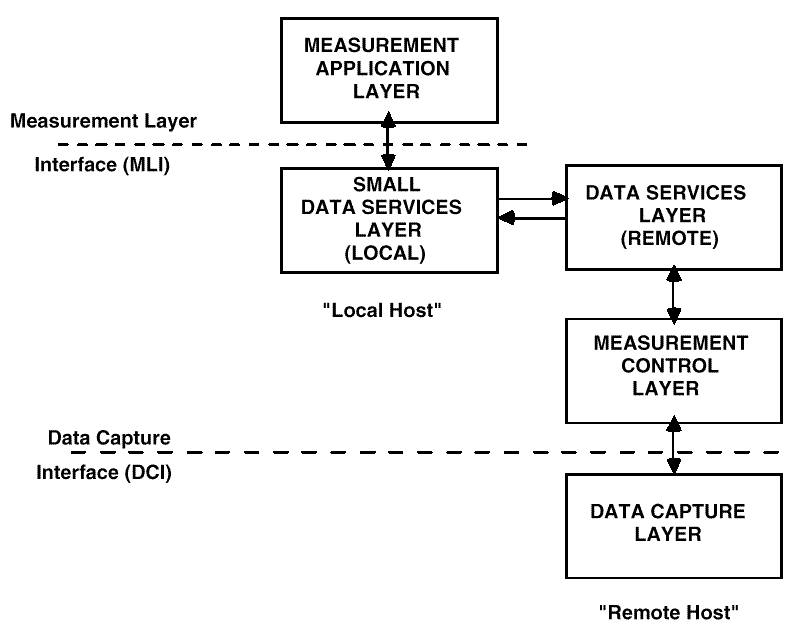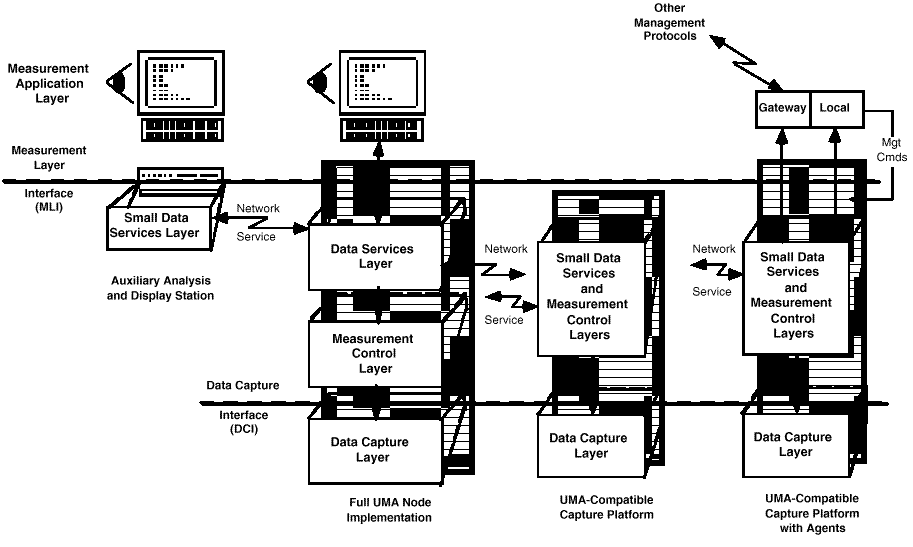

It is quite possible on the other hand to have the local host
exist only to be a platform for control and display of performance data collected
elsewhere. In this case, it will not be executing a Measurement Control Layer nor a Data
Capture Layer, but instead, just a Data Services Layer and the MAP (together with its
linked MLI). Furthermore, its Data Services Layer is much simplified, since it
has no local
data collections to coordinate or process, and it may not even be supporting a
local
UMADS. This situation is depicted below in

Here the local Data Services Layer (referred to as "small") is much simplified, merely acting as a forwarding service for local MLI requests to the remote host and for responses and data from the remote host back to the MAP through the MLI.
In practice, one would like to deploy instances of UMA components that provide only those services that may be required in a given case. For example, there is no need to (nor is it desirable to) deploy an instance of the Data Services Layer that implements UMADS reading and writing on a host that is exclusively an object for data collection.
A related step to deploying only those UMA services required in a given instance is to deploy only those configuration components required. For example, there is no need to deploy either local Measurement Control or Data Capture Layers on a host that is used only for the analysis and display of performance data from other hosts.

Moving from left to right, we first have a host that is used exclusively for analysis and display of data - it implements only the MLI and a "small" Data Services Layer. Next, is a "full" configuration that has all of the layers of the UMA reference model and all of its services - this host is used both as an object of data collection, a repository of archival performance data (UMADS), and as a platform for analysis and display applications. The next two platforms are used only for the collection of live data (they have no read or write access to UMADS) and so implement only "small" Data Services Layers. The rightmost platform additionally supports two local measurement applications, one that monitors its performance and issues local management commands (not part of UMA) that make adjustments to promote better performance of certain critical applications, the other to export some of the performance data via other protocols (to an SNMP-based monitor, for example).
The default protocol and interface by which Data Services Layers communicate is TCP/IP with sockets (using the registered ports).
UMA messages contain information on byte ordering, enabling them to be used between systems which have different conventions.
| Contents | Next section | Index |